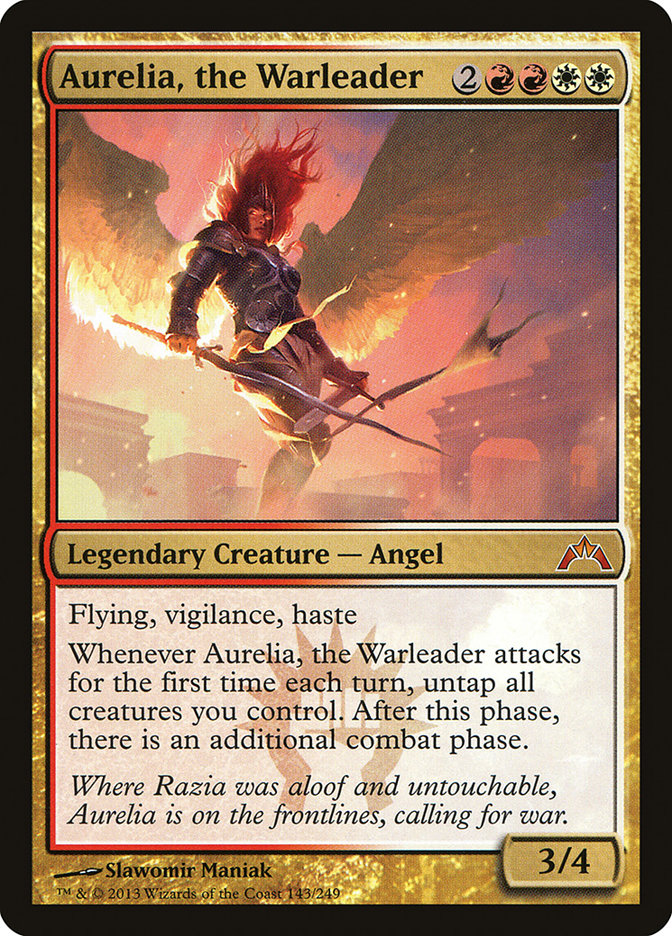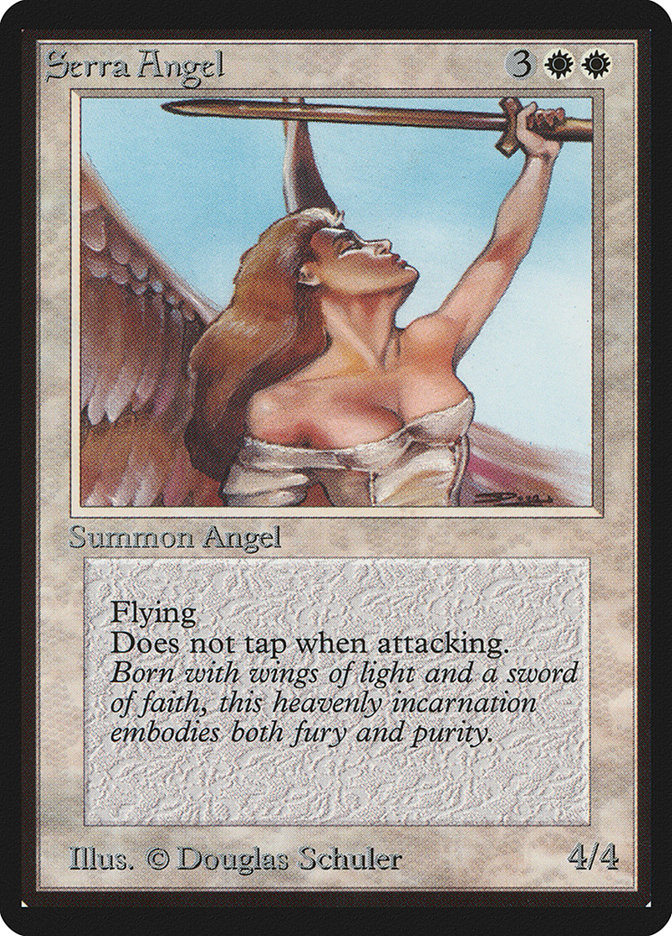Dear Azami,
I need your help. I am writing this on my six-year anniversary with my fiancee, asking for your help with the deck I built for her.
Her name is Crystal, and she is amazing, so much so that she was willing to learn to play Magic for me. She enjoys angels, casual Magic, battling the horde/hydra, and Commander in general when it’s not cutthroat.
I’m not an expert at building Commander decks, and have been trying really hard to build her a deck that is casual, powerful, and lets her keep her favorite cards. This unfortunately led me to selecting Kaalia of the Vast as her commander. She can’t play against anyone but me without them thinking that she has Master of Cruelties in the 99. I don’t know if she needs a new commander or just to re-tool the list, but it needs to fit a few criteria:
- Avacyn, Angel of Hope, Akroma, Angel of Wrath, Gideon Jura and Gideon, Champion of Justice cannot be removed. These are her four favorite cards in the entire game, and I made sure to provide her with a foil copy of each. Angels should be a theme to the deck, other themes are secondary.
- She has to be able to win, and not just because I let her.
- Money is not as much of an issue as pretty art, angels, and power level.
The list as it stands:
Commander: Kaalia of the Vast
8 Plains
2 Swamp
5 Mountain
Thanks!
-RJ
Hi Crystal and RJ,
It sounds like we’re at a pretty fun place as far as the cards you get to play, but the choice of Kaalia of the Vast sends some harsh expectations on you
from opponents who don’t know you’re a new player or the power level of your deck. I think the deck needs some fine-tuning and a commander shift, so I
wanted to ask the following:
1) How do you like Mardu as your three-color combination of choice? Are all three colors appealing to you, and are there any cards in the deck that really
exemplify what you have fun doing during a game? There aren’t very many other choices for this three-color combination, so if you do keep with Mardu
instead of another wedge or shard, would you enjoy playing with Oros, the Avenger… Tariel, Reckoner of Souls… Zurgo Helmsmasher… or the new option in
Fate Reforged, Alesha, Who Smiles at Death?
2) What are your ten must-have cards out of the deck so far, the things that you always enjoy drawing and getting to play with? I’m trying to figure out
what parts of the deck to amplify and what parts are less important, and this will also help me figure out which colors are most important to you – RJ
listed your four favorite cards as Avacyn, Angel of Hope… Akroma, Angel of Wrath… Gideon Jura, and Gideon, Champion of Justice, all four of which are
white, which tells me the deck absolutely needs to be a white deck but doesn’t say whether red or black are also important to you.
3) If we do shift to other colors, do you like either blue or green? Do any cards in either of those colors appeal to you, or look like they would work
particularly well with the cards you most love out of this deck?
I’d love to help, but I need to know more!
— Sean
Thanks so much! I just did a happy-dance when I found out what you and RJ are doing for me!
Angels are just so pretty, and Gideon is sexy. I just like using pretty cards to win. Serra Angel with a Sword of War and Peace is fun.
My top ten Angels are:
I don’t really like black cards much, because most of them are ugly, but some are just so pretty, but I really just think the most beautiful art is usually
on white cards. As long as I get to play with my angels and beat people with them, I’m happy.
— Crystal
We don’t usually switch up Commanders when people send their decks in, but all of the criteria you’ve told us are important suggested that we have to do exactly that. For one thing, as good as Kaalia may be in an Angel-powered deck, she’s not actually an Angel – and we’re running face-first into the problem that Kaalia-the-Overpowering is a thoroughly-explored archetype, to the point where your playgroups find it hard to give anyone playing her the benefit of the doubt. And on top of that, black cards are icky – even though some of them are also pretty – and that has a meaningful value here. I tried figuring out what other colors might be worth adding, and what commanders could possibly take the helm, but nothing really spoke compellingly in favor of either Naya or Jeskai when we could just stay Boros and advance a fire-tinged Angel to the role of commander in Kaalia’s stead.
We’ll start with Crystal’s new commander (hopefully a foil copy!) and go from there:
There seemed to be two very evocative choices we could consider: Gisela or Aurelia – Razia could also be worthwhile, but six is a lot less mana than eight for a commander, and both of their abilities are considerably stronger than Razia’s combat-tricksy tap ability. With the abstract power level of Kaalia being too well-known and, well, too vast for the more-casual play style we’re looking for, that suggests that Gisela, Blade of Goldnight would also threaten to speak for your deck without letting the rest of the cards speak for themselves. Aurelia hits all of our other key notes without being immediately dangerous to an unknown opponent, and seems to be the best compromise between having a high-powered Angel as your commander and having opponents pre-emptively attack you because of what they assume goes with what you’re doing.
Aurelia says very strongly that your deck is “just” going to attack and block, even if it’s going to do that very well – they can control what happens to them if they control the rest of your creatures, while Gisela can put them in dangerous territory even if you aren’t attacking them thanks to her damage-doubling ability.
Pulling a color out of this deck gives us a very easy place to start, with the manabase – all of the black mana has to go, even though it’s a shame to pull Revised dual lands out of a sweet, sweet manabase. We begin by cutting the following:


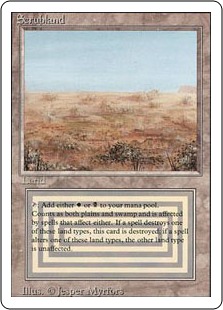
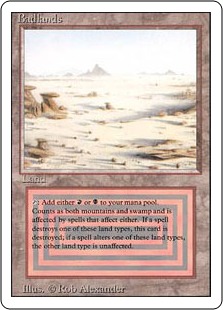
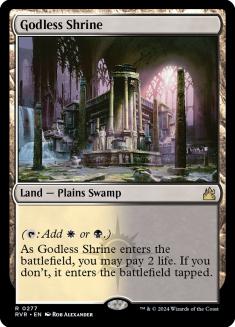
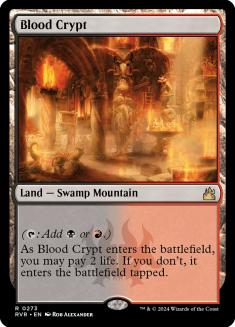
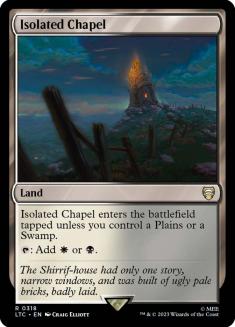
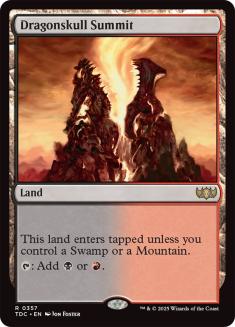
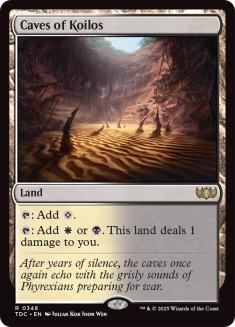
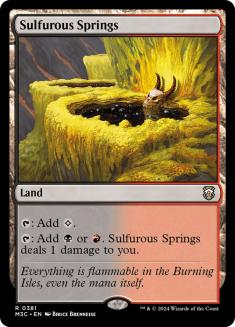
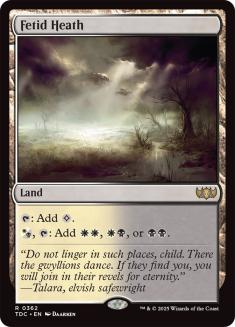
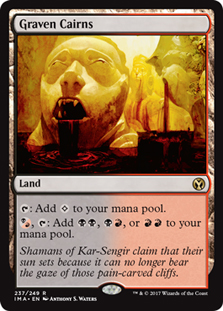
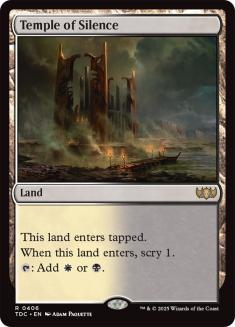
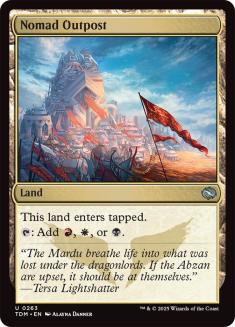
We’ll also note here that we’re going to shift your five Mountains and eight Plains to Snow-Covered Mountains and Snow-Covered Plains – this will help support a card we’re going to add later, but it also helps that they’re quite pretty as well to look at. I favor the Ice Age Snow-Covered Plains and the Coldsnap Snow-Covered Mountain, take a look:
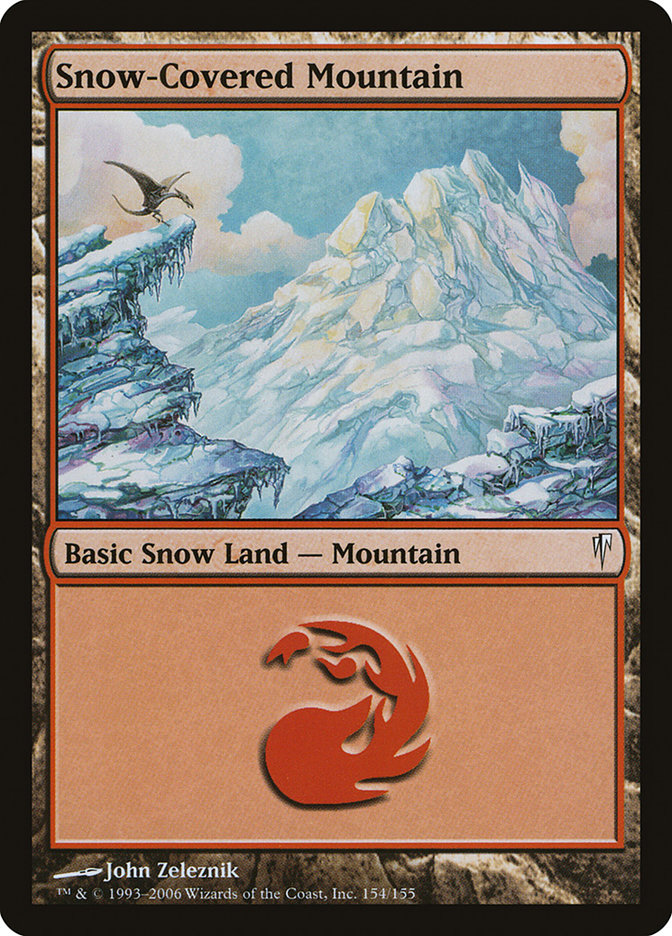
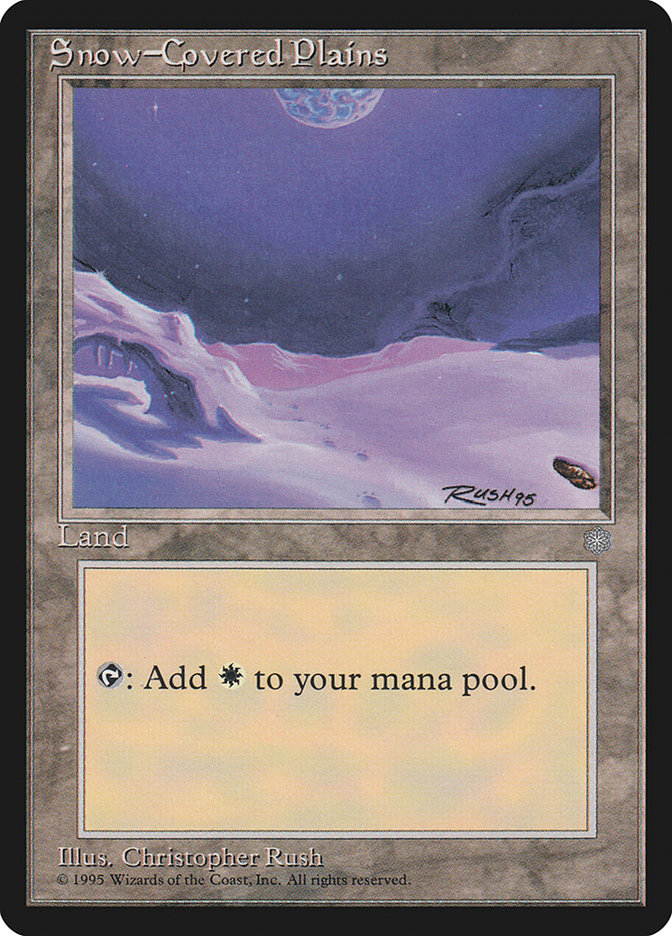
Adding back in to replace the missing lands, we’re going to shave two slots altogether – the starting decklist had 40 lands, and I think 37 is typically what most decks need (plus one if you are playing Maze of Ith, since it doesn’t tap for mana, and thus, does not count despite being a land). This deck is pretty close to the typical deck as far as mana needs go, and we’ll have a few more cards that effectively pad the land count as well, so we can put those two slots to work filling out your creature base later!
In:
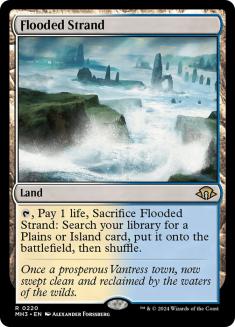

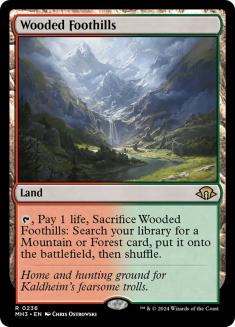
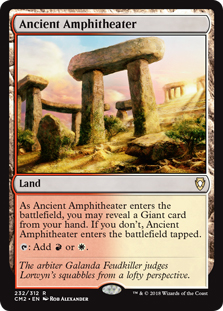
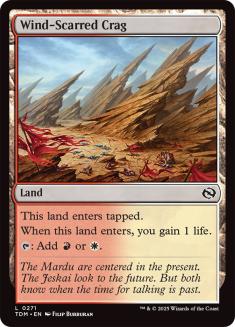
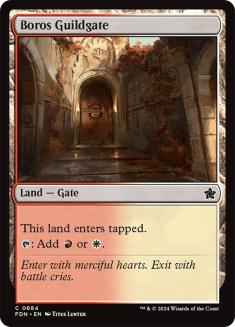
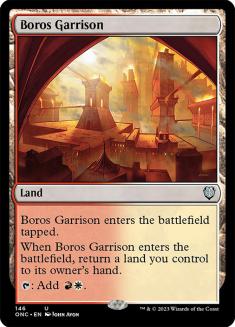
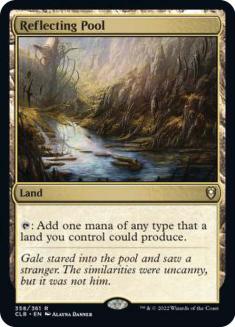
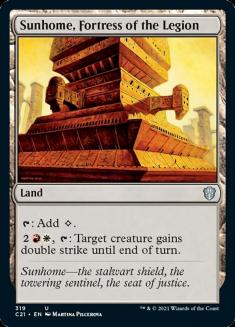
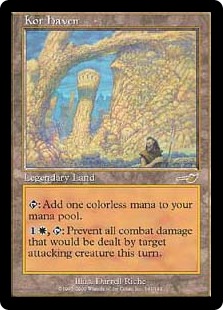
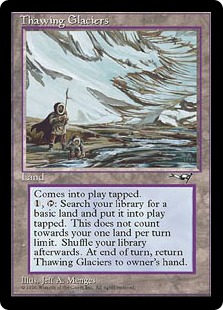
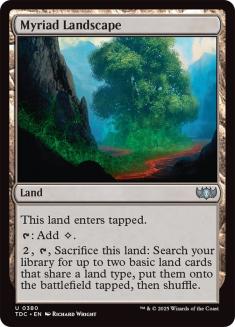
I consider off-color fetchlands to be perfectly acceptable, so not only did I keep the ones the deck had already been playing but which are no longer
on-color – Bloodstained Mire and Marsh Flats – I felt it worthwhile to add the missing versions that are available in Khans of Tarkir now that their price
has become eminently reasonable; so we’re adding Flooded Strand, Windswept Heath and Wooded Foothills to find those key copies of Plateau and Sacred
Foundry and fix your mana. An absolute completist could go further and decide to spend for the missing Scalding Tarn, but acquiring the reprinted
allied-color fetchlands while Khans of Tarkir is in-print is key. You could also just not add them and play more basics instead – the deck’s
colored mana is already going to be quite good without them – but in the long-term I consider this to be key financial advice for Commander aficionados and
would value them enough to get them.
We get to add a few more utility lands now that we’re a two-color deck instead of a three-color one, and Sunhome, Fortress of the Legion is potentially quite dangerous with your new commander. Aurelia already doubles damage thanks to granting two combat steps, and doubling it again by giving a
creature double strike makes it all the more dangerous. It’s also worth remembering as a potent combat trick for a fight you’re not a participant in –
Sunhome isn’t limited to creatures you control, so it can be a political tool or a sneaky trick if you need to gang up on someone. Whether it changes the
combat math to take out a key creature, forces an opponent to use a removal spell on another player’s threat, or even makes combat lethal for a rival you
want to see taken down, you’ll get a lot of effect out of this particular land.
Moving on to the artifacts, we’ll start by cutting cards:
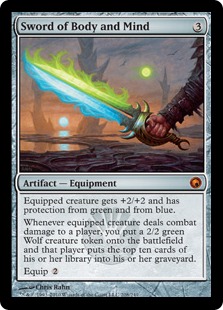
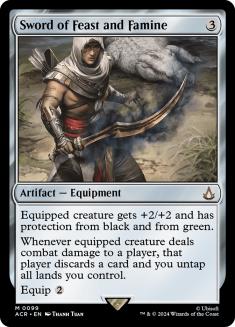
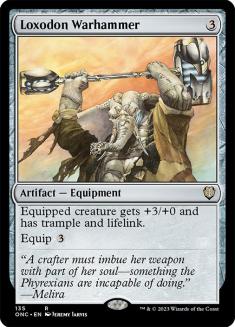
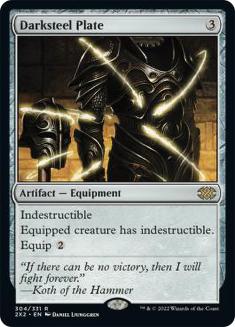
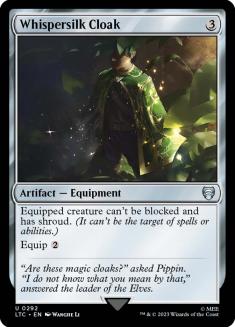
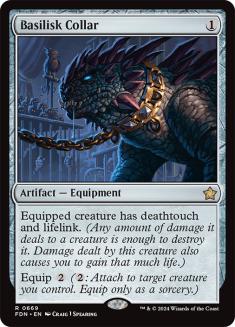
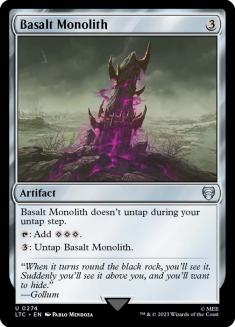
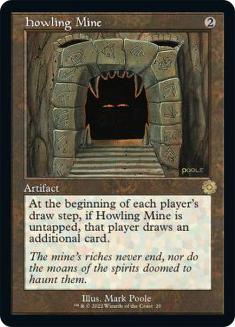
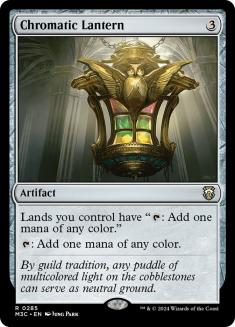
We’re actually going to cut five of these nine slots, because the deck is heavy on equipment and light on creatures to equip them to. Of the four cards
we’re adding back in, two are equipment cards, so you’ll have nine of them to build up your forces with – enough to make sure you draw one regularly even
before accounting for the equipment-searching creatures that will help to find the right ones. The most suspicious of these cuts is the Sword of Feast and
Famine, since it is of such a high power level that it is usually on the short list of first equipment to include. We don’t actually want that many Swords,
and I’d have cut Sword of Fire and Ice too if it wasn’t so darn pretty, but Sword of Feast and Famine is not-pretty (and thus was not saved by
that same arbitrary aesthetic safety net) and the kind of card that draws a lot of notice from a table since it can let you generate a lot of mana. Add in your new commander and the card is even more threatening, forcing opponents to overreact even further, and it’s worth cutting
just to keep the deck at the targeted level of casual-but-powerful. People are bound to see this and wonder where the Aggravated Assault is for the
infinite-damage combo, and we can just skip it instead even though the card is undoubtedly awesome.
Awesome doesn’t always equal fun, and powerful doesn’t mean the card should stay in the deck. There are hundreds of powerful cards we can
play in Commander, but we only get 99 slots to play with.
Adding back in, we get the following:
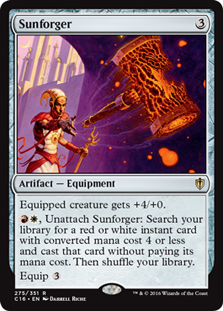
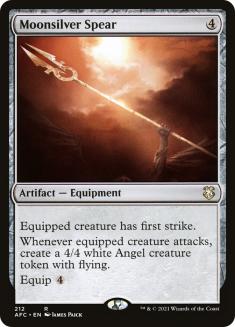
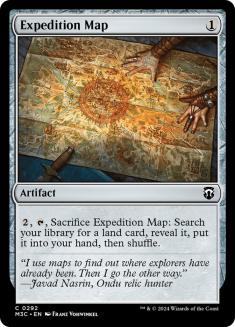
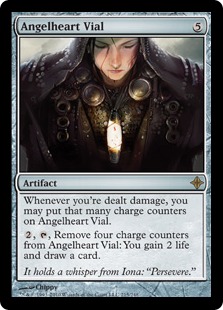
Expedition Map is great with utility lands, which you have plenty of, while Angelheart Vial is an Angel-themed card-draw permanent that even gives back a bit of life too while you’re at it. We need to keep card in our hand at a reasonable price, and this even plays up the Angel-themed side of the deck while being a pretty card to boot. The aesthetic side of things is going to skew our choices pretty hard, which is atypical for me since I tend to look at Commander deckbuilding from a pretty Spike-y place… but Vorthos is just as important this time, and we’re acting accordingly.
The new equipment we’re adding will help bolster sides of the deck’s equipment sub-game that were otherwise missing; we cut a lot of duplicative cards (we don’t need three different equipment granting lifelink, after all) and really want unique effects, which both Moonsilver Spear and Sunforger provide. Sunforger requires us to build in a bit more of a spell base, though I’m not going to push this requirement too far – four or five targets and a variety of effects is enough to make it worthwhile; if you use it for two removal spells and get to attack with its +4/+0 power boost a few times, it’s already over-performing. And Moonsilver Spear lets us build up that Angel army pretty quickly – especially once we start doubling combat steps, as Aurelia is wont to do.
We move now to the support spells, where we’re going to pull most of them out – one half because we’ve pulled a color out of the deck and the other because they just don’t fit its new identity very well.
Out:
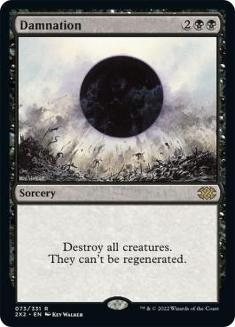
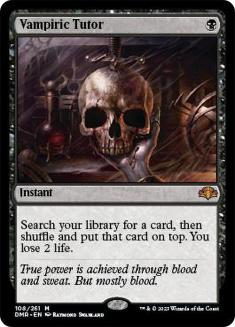

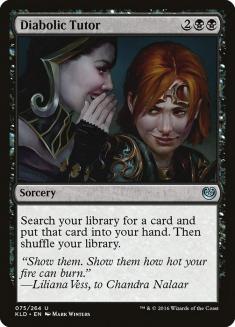
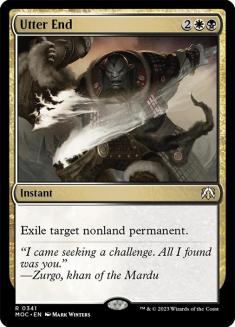
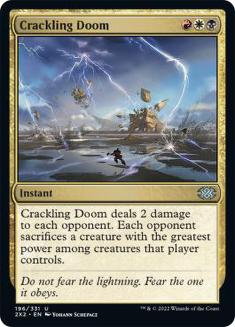
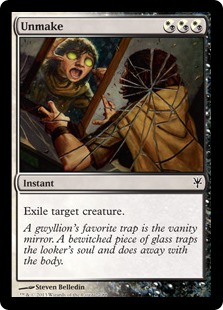
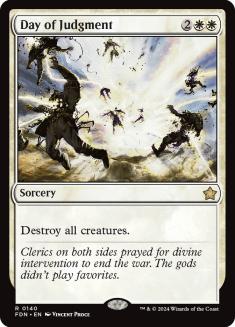
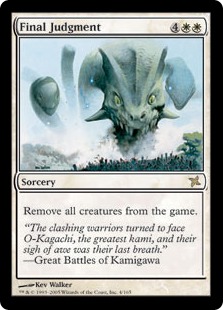
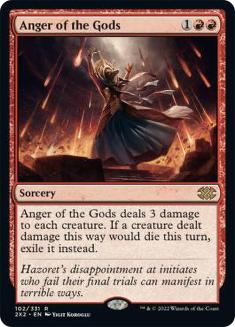
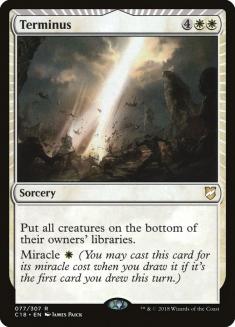
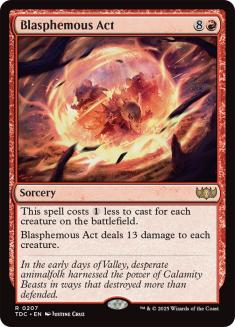
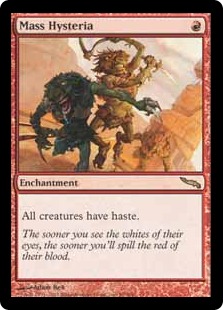
We’re trying to be the beatdown, which means we’re trying to not Wrath the board too frequently; this isn’t a control deck, so we want our sweepers to be limited in number and preferably increased in utility. And Mass Hysteria just doesn’t fit; we aren’t going to be able to take advantage of it that fully, but can expect the benefits it extends to our opponents to potentially kill us once in a while – so I’d sooner cut it. One slot moves over to the creature section, so we can add a total of eight slots later on… leaving us twelve slots still to fill here.
Five will be added purely for their effect, regardless of whether they’re easy on the eyes or not – and seven will have been chosen because the aesthetics line up with the card being interesting and effective in the deck. Let’s get the ugly ducklings out of the way first:
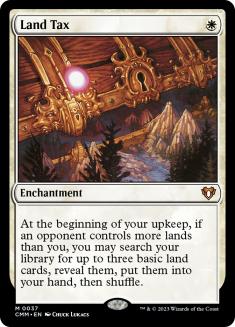
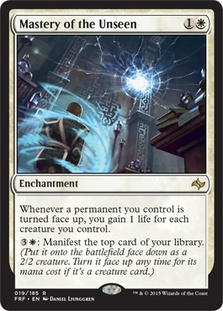
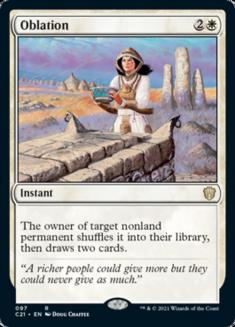
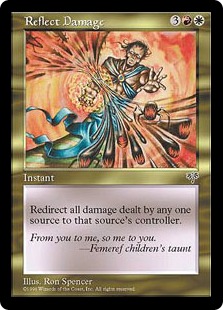
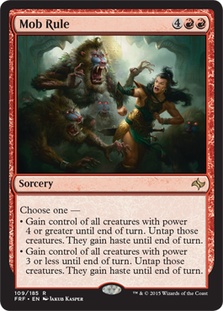
Land Tax is the mana-enabler this deck sorely wanted, rather than the mana rocks we’ve just cut from the earlier section. It’s ugly – ugly as sin, in fact – but it’s as powerful as it is ugly, and that gives it the nod while we’re weighing things practically. Mastery of the Unseen is part card advantage, part lifegain, and all sorts of awesome with the creatures we have to work with – at the very least it helps to make sure that Aurelia will always have an army to work with. While some of our creatures will be less effective because we lose all of the enters-the-battlefield effects and other things that would just never occur (like Iona choosing a color) because the rules around manifest are weird, the ability to use a cheap card to build up a huge board presence later in the game is well worth the occasional bits of oddness that occur.
Oblation is here a key Sunforger target, but it is also just super-effective at answering whatever problem ails you – and Mob Rule is worth trying out here as a cheaper but still highly-effective Insurrection surrogate. One key concern with this deck is that the very top of the mana curve can weigh us down, so if we can choose between an eight-drop and a six-drop while keeping 90% of the effectiveness of the card, that’s a tradeoff I’m happy to make here.
Our last addition comes courtesy of Sheldon Menery’s “You Did This To Yourself” style of play, which I think will give the deck a good angle it might otherwise be lacking and also greatly increase the casual-fun awesomeness of the games – did you know that redirecting 21 combat damage from someone else’s commander back to them will kill them? Sheldon did, and I think this plays up the Boros flavor of the deck by giving it a self-defense tool that it can really hurt an opponent with.
The other seven choices have an aesthetic weight to them, in addition to needing to meet other criteria. First we have two more Sunforger targets:

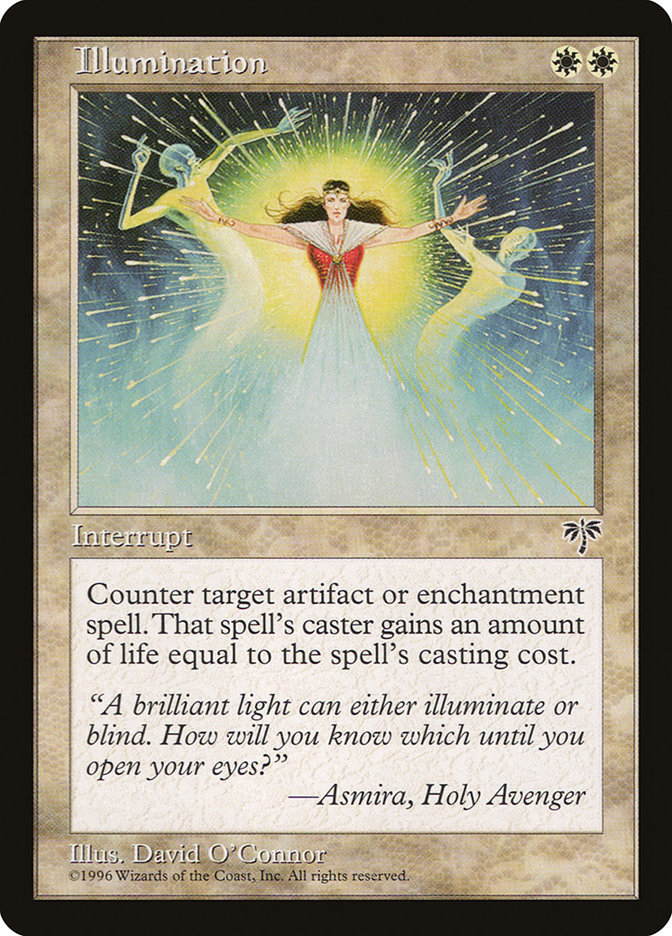
Both of these are situational counterspells, which I find to be considerably more powerful to have in your deck when you a) have Sunforger to find them, and b) are playing a color combination that is not likely to ever have a counter. I’d have gone with Lapse of Certainty too, but it’s not particularly pretty – so Illumination got the nod instead. While it is a situational counter, it is also a hard counter for two of the best permanent types in the format; sometimes you need to stop an Oblivion Stone and a Disenchant effect just isn’t good enough. Dawn Charm’s counterspell mode is very limited, but it makes up for it with the other options – while regenerating a creature may not be “worth a card” in Commander, we’re not planning to spend a card we’ve actually drawn to have that option, and having a Fog when you need one can actually be pretty big in the format.
The other five choices were a mix of aesthetics and effect:
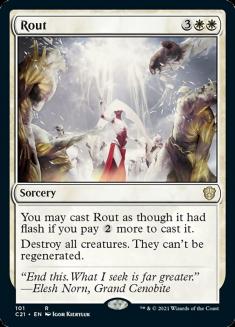
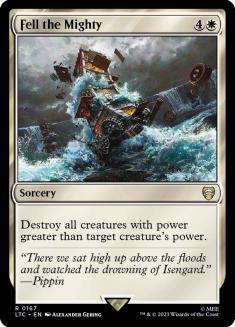
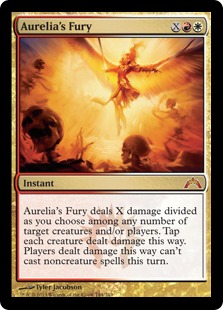
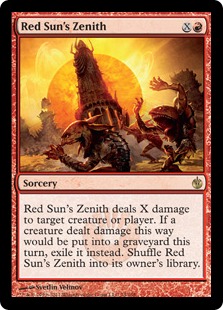
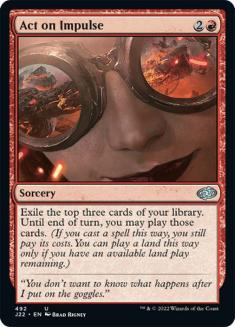
… Rout needs to be the new Conspiracy art, which is awesome, rather than the original edition from Invasion. It’s much better to have a Wrath effect you can play mid-combat, so while I was happy to pare down on the number of them just to begin with, I also wanted to upgrade the ones that were there – Day of Judgment became Rout so it could save the day more consistently, as sometimes you don’t know you needed to Wrath until lethal damage is swinging at you. Fell the Mighty gives the option to take down opponents’ big threats while keeping your own best creatures in play, and is much easier on the eyes than Austere Command – which is usually what gets the nod in this slot, for flexibility and power, but considering the creature-sweeper function is highly biased to Wrath our board here (since almost all of our creatures cost four or more) this seems like the better way to kill big problems while leaving our stuff untouched.
Aurelia’s Fury has a lot of power and flexibility, it can Silence opponents and tap all of their creatures or it can just Fireball someone to death – it has both a blunt-force mode and a finesse mode and can be used cleverly for whatever you need to do. Red Sun’s Zenith has awesome art and is a strong effect later in the game, allowing us to add a bit of extra reach for when combat just isn’t working out. And the last choice, Act on Impulse, gives us some lategame card draw – and that art is absolutely fantastic.
I wanted to fill out all of the remaining slots with Angels, but there was one Dragon that demanded an exemption… so let’s finish this deck out. We have eight slots open plus one more thanks to advancing Aurelia, the Warleader to the role of commander, and have five cuts to make:
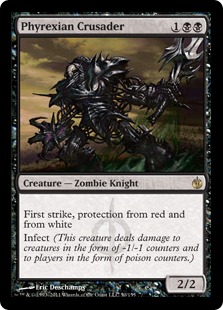
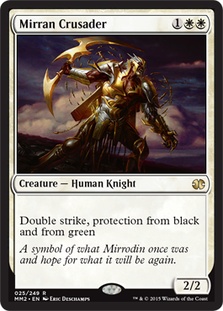
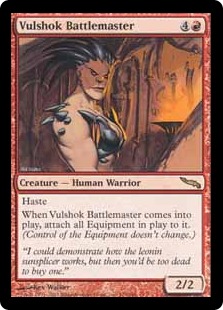
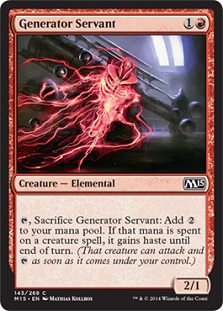
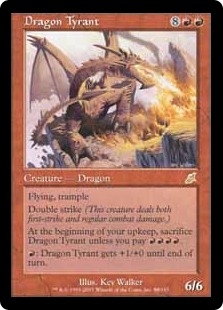
Generator Servant didn’t seem that interesting or relevant given how easily this deck can find Lightning Greaves if it wants to, and the argument in favor became less compelling now that our commander has haste all by herself. Dragon Tyrant is just a boring powerful Dragon that doesn’t fit now that Kaalia is not in command, and Phyrexian Crusader is out for the obvious reasons of “we cut that color.” Mirran Crusader could stick in the deck – it’s strong with Aurelia providing a second attack step and holds equipment very well – but double-striking someone to death with a Sword is a bit easy to see coming and I’d rather skip it, honestly. Our last cut seems like it would be excellent in an equipment-heavy deck – the ability to cast Vulshok Battlemaster and have it pick up Argentum Armor, three Swords, and some of your opponents’ equipment besides, that just sounds amazing – but I have long experience with it as the most-disappointing card out of my Godo, Bandit Warlord deck. It’s nowhere near as good as the fantasy sounds, and should get cut to let us add another Angel to the deck.
With fourteen slots to fill, we have one Dragon and thirteen Angels to bulk up your air force with:
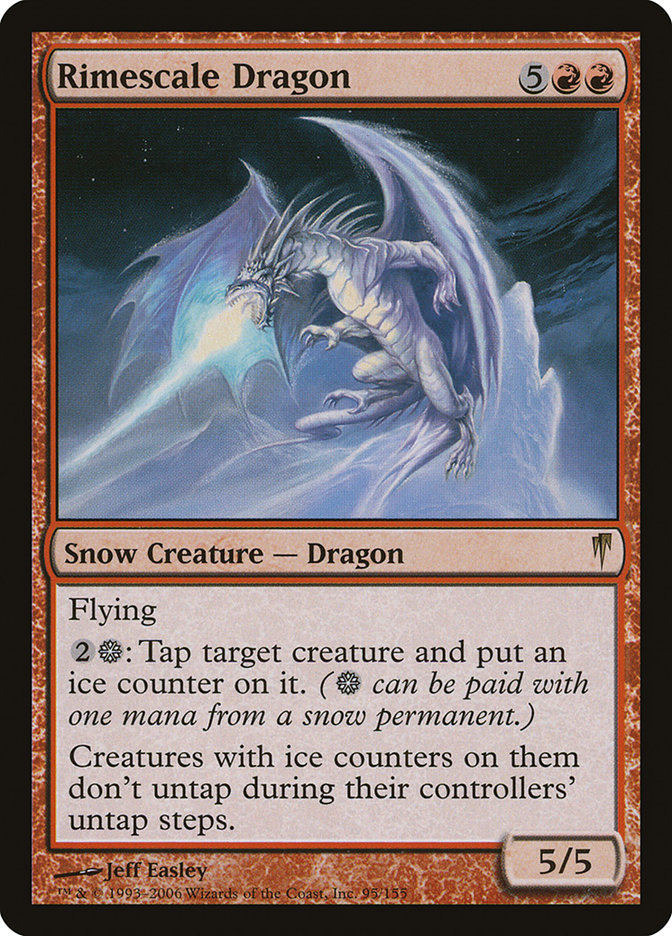
Aesthetics? Check – that Dragon art is amazing. Ability? Check – a decent-sized flier for the cost, though let’s face it we’d probably see this start as a 6/6 these days, and the ability to hold down opposing creatures is a strong ability we can put to excellent work. I really wanted more Angels to keep that happy-dance going strong from game to game, but Rimescale Dragon has proven to be a potent board-control creature that works better for us than your average Wrath effect would have, and happened to hit the “pretty!” check-box while we’re at it.
And now let’s pile on with the Angels:
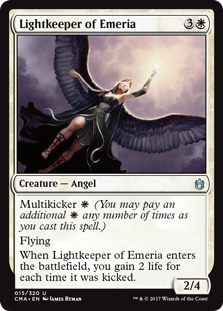
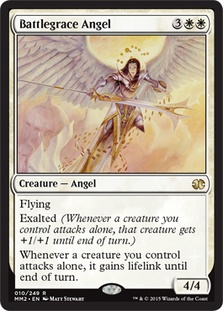
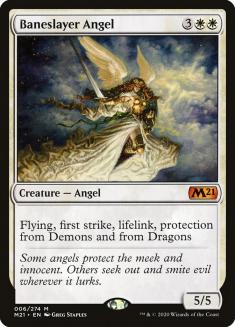
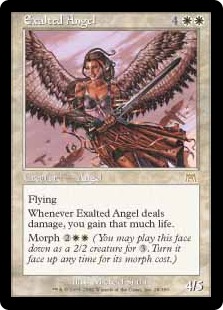
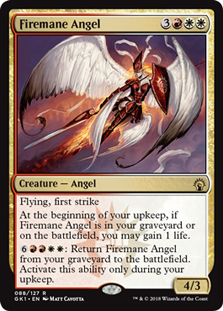
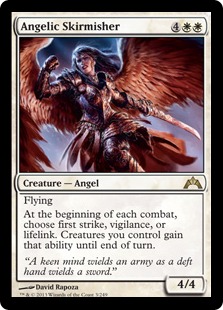
This is Team Lifelink, which will help replace the missing defenses by bolstering our life total while we’re beating down. I don’t really like lifegain in Commander – I know people who swear by Congregate, but I look at it and just see a mulligan – but I am hugely in favor of incidental lifegain, especially if you can get it while beating down or at low cost. More creatures with lifelink help replace the excess pieces of equipment we cut that granted that ability, and that was part of the plan when we cut them in the first place… and yes, we could have played True Conviction rather than Angelic Skirmisher, but I picked the one that counted as an Angel (… and wouldn’t make nervous opponents kill us as a twitch reflex, because True Conviction + Aurelia is an awful lot of damage). It helps that several of these were your favorite cards to begin with, and we’ve given you more things like your favorite cards so you get to play the game you like and do well while you’re at it.
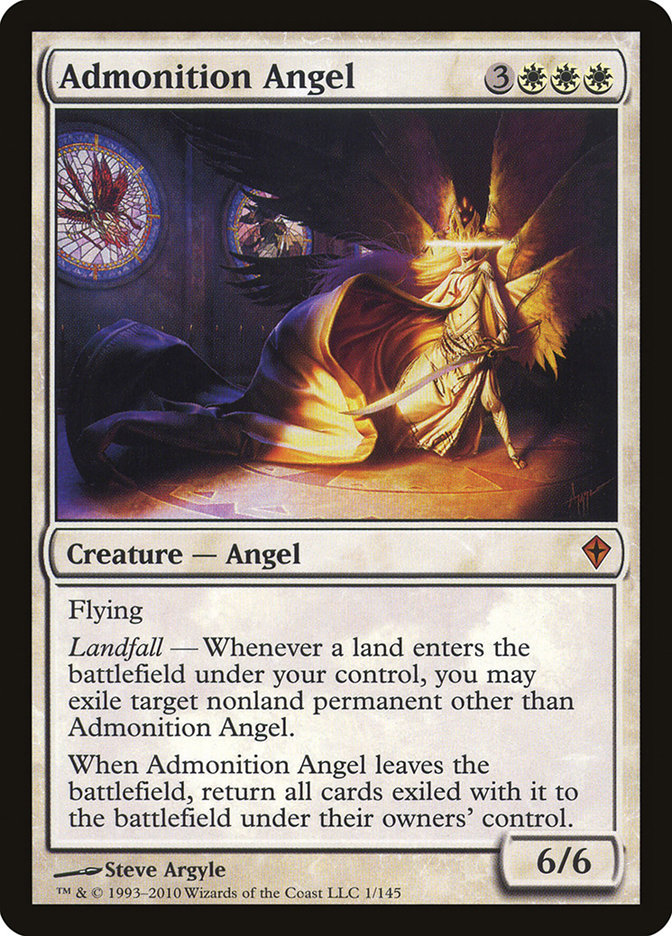
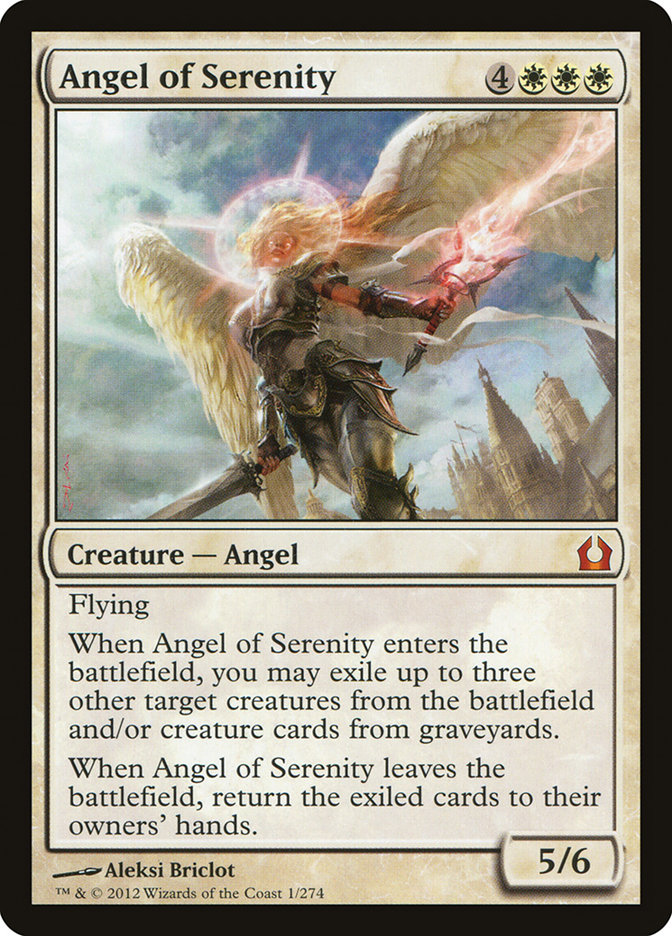

The deck wanted more removal that didn’t wreck your own board, so we cut spell-based sweepers… and added Angel-based removal instead. Compare Terminus to
Angel of the Dire Hour and it looks pretty darn favorable – it leaves all of your creatures unscathed, exiles the key problems so long as they’re attacking
you, and gives you a sizeable flier to boot. Angel of Serenity is actually the weakest of the bunch as far as removal goes… but it’s a pretty
strong bunch, and she makes up for that weakness by adding flexibility, sometimes you’ll target three creatures from your graveyard instead and buy
yourself back some threats when the next board wipe comes along.
The last four were somewhat random, and I went with a mix of what the deck needs – what is it not very good at doing so far? – and a happy mix of power and
aesthetics. They had to be pretty, they had to be good cards, and if they could cover a weakness too while they’re at it, so much the better.
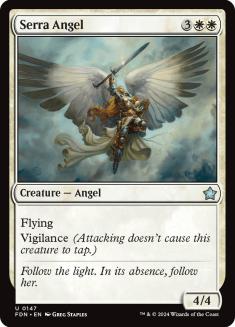
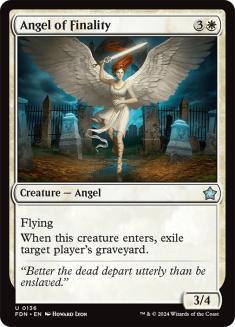
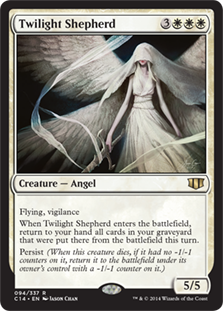
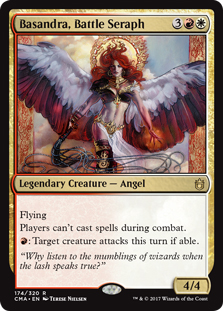
If Serra Angel is one of your favorite Angels, by all means, go ahead and play her! While her power level is low, your victory condition is a mix of Vorthos-fueled joy and “attacks for lethal,” and while Serra is underpowered compared to her modern analogue – see above, Baneslayer Angel – she’s not underpowered enough to warrant shying away from her; she holds a Sword pretty darn well and is still quite serviceable as a five-mana creature. Any creature with reasonable stats will be twice as good when Aurelia comes down, so embrace that you want to attack with Serra Angel and put a Sword of War and Peace in her hand!
Angel of Finality allows you to pay attention to an opponent’s graveyard, which otherwise would be sorely neglected, while Twilight Shepherd is excellent at pre-emptively protecting you against Wrath effects. We’re not really worrying about opposing Wraths, since I figure we’ll probably only have two creatures plus our commander in play in your average game. Much more than that and your opponents should be dead already, and that means since Aurelia lets us hit a critical mass with very little actual cardboard invested, we don’t need to go to many lengths in order to dodge Wrath effects. (I personally love tutoring for Boros Charm with Sunforger – people don’t usually see it coming, and they definitely don’t see it coming if the Sunforger is still in your deck and Stonehewer Giant is sitting in play…)
That last addition, Basandra, Battle Seraph, is there to lock the door. Once attackers are declared, no more tricks – if we can’t see it coming, it can’t save you in time. The ability almost feels like it’s stapled on, most people won’t realize what her job is – that job is providing certainty, it allows you to sculpt the game in such a way as to attack for lethal damage knowing full well that you don’t have to play around anything that isn’t an on-board trick. Commander boardstates can get very complicated, and three players trying to stop you is a lot of resistance to plan around. Sometimes you just want to know the chips are going to fall where they may, and Basandra mimics Teferi, Mage of Zhalfir in his ability to restrain opponents from using spells in their own defense… which is not an ability you’d much expect to see out of a Boros deck. She goes from afterthought to game-changer really quickly, forcing your opponents to spend their removal before you’ve shown them who you intend to attack this turn, and if they don’t see that side of her before it’s too late – well, too late.
And while you could get that Serra Angel in foil pretty cheaply, to go with the rest of your pretty foil Angels, I might suggest the following as an eventual present:
The Deck
Putting it all together, we get the following:
Creatures (27)
- 1 Serra Angel
- 1 Exalted Angel
- 1 Blinding Angel
- 1 Godo, Bandit Warlord
- 1 Akroma, Angel of Wrath
- 1 Firemane Angel
- 1 Rimescale Dragon
- 1 Akroma, Angel of Fury
- 1 Stonehewer Giant
- 1 Twilight Shepherd
- 1 Battlegrace Angel
- 1 Baneslayer Angel
- 1 Iona, Shield of Emeria
- 1 Admonition Angel
- 1 Lightkeeper of Emeria
- 1 Stoneforge Mystic
- 1 Steel Hellkite
- 1 Sunblast Angel
- 1 Basandra, Battle Seraph
- 1 Avacyn, Angel of Hope
- 1 Angel of Jubilation
- 1 Gisela, Blade of Goldnight
- 1 Angel of Serenity
- 1 Aurelia, the Warleader
- 1 Angelic Skirmisher
- 1 Angel of Finality
- 1 Angel of the Dire Hour
Planeswalkers (2)
Lands (38)
- 1 Wooded Foothills
- 1 Thawing Glaciers
- 1 Reflecting Pool
- 1 Kor Haven
- 1 Plateau
- 1 Windswept Heath
- 1 Flooded Strand
- 1 Bloodstained Mire
- 1 Maze of Ith
- 8 Snow-Covered Plains
- 5 Snow-Covered Mountain
- 1 Battlefield Forge
- 1 Boros Garrison
- 1 Sacred Foundry
- 1 Sunhome, Fortress of the Legion
- 1 Ancient Amphitheater
- 1 Rugged Prairie
- 1 Arid Mesa
- 1 Marsh Flats
- 1 Mystifying Maze
- 1 Command Tower
- 1 Clifftop Retreat
- 1 Slayers' Stronghold
- 1 Boros Guildgate
- 1 Temple of Triumph
- 1 Wind-Scarred Crag
- 1 Myriad Landscape
Spells (33)
- 1 Sensei's Divining Top
- 1 Nevinyrral's Disk
- 1 Wrath of God
- 1 Swords to Plowshares
- 1 Land Tax
- 1 Sol Ring
- 1 Sword of Light and Shadow
- 1 Sword of Fire and Ice
- 1 Lightning Greaves
- 1 Oblation
- 1 Reflect Damage
- 1 Illumination
- 1 Rout
- 1 Sunforger
- 1 Dawn Charm
- 1 Path to Exile
- 1 Expedition Map
- 1 Luminarch Ascension
- 1 Angelheart Vial
- 1 Elixir of Immortality
- 1 Argentum Armor
- 1 Red Sun's Zenith
- 1 Batterskull
- 1 Sword of War and Peace
- 1 Moonsilver Spear
- 1 Bonfire of the Damned
- 1 Entreat the Angels
- 1 Aurelia's Fury
- 1 Godsend
- 1 Act on Impulse
- 1 Fell the Mighty
- 1 Mastery of the Unseen
- 1 Mob Rule

As always, for your participation in this week’s edition of Dear Azami you will receive a $20 coupon to the StarCityGames.com Store – and while that will barely put a dent in that Beta Serra up there, the deck totaled $122.04 and the coupon will cover a decent chunk of that. I’d be reasonably willing to assume that the most expensive component, the three fetchlands, are something RJ might already have access to – we’re cutting two Revised dual lands, after all, so it’s reasonable to assume he has a pretty deep card pool for Commander decks, and that’d cut the price nearly in half if those were already accounted for.
Priced out individually, it looks like this:
| Wind-Scarred Crag | 0.15 |
| Act on Impulse | 0.25 |
| Boros Guildgate | 0.25 |
| Illumination | 0.25 |
| Lightkeeper of Emeria | 0.25 |
| Serra Angel | 0.25 |
| Sunhome, Fortress of the Legion | 0.35 |
| Angelheart Vial | 0.49 |
| Boros Garrison | 0.49 |
| Mastery of the Unseen | 0.49 |
| Mob Rule | 0.49 |
| Oblation | 0.49 |
| Reflect Damage | 0.49 |
| Angelic Skirmisher | 0.55 |
| Basandra, Battle Seraph | 0.59 |
| Fell the Mighty | 0.59 |
| Firemane Angel | 0.59 |
| Red Sun’s Zenith | 0.59 |
| Twilight Shepherd | 0.65 |
| Dawn Charm | 0.69 |
| Moonsilver Spear | 0.69 |
| Angel of Finality | 0.85 |
| Ancient Amphitheater | 0.99 |
| Myriad Landscape | 1.05 |
| Rimescale Dragon | 1.09 |
| Rout | 1.09 |
| Sunforger | 1.29 |
| Angel of the Dire Hour | 1.45 |
| Aurelia’s Fury | 1.49 |
| Expedition Map | 1.55 |
| Angel of Serenity | 1.85 |
| Battlegrace Angel | 2.79 |
| Exalted Angel | 3.15 |
| Reflecting Pool | 4.79 |
| Admonition Angel | 5.09 |
| Thawing Glaciers | 7.45 |
| Kor Haven | 8.09 |
| Baneslayer Angel | 12.75 |
| Land Tax | 13.55 |
| Wooded Foothills | 13.59 |
| Windswept Heath | 14.59 |
| Flooded Strand | 20.29 |
This weekend is the Fate Reforged Prerelease, and that gives us five new legendary creatures to work with for anyone who’s interested to build around them – they’re pretty compelling, and they’re even pretty flexible thanks to color identity rules and hybrid mana costs, you can build Tasigur, the Golden Fang as a Sultai deck, a Golgari deck, or a Dimir deck, depending on what interests you and what you’re trying to accomplish. I think this is an interesting play-space for Commander to explore, and want to see more of it – so far hybrid-mana Commanders like Oona, Queen of the Fae have allowed you to play either one- or two-color decks, this cycle lets you choose between two- and three-color decks, and I can see the potential for this to allow even greater flexibility and range of options if it were to be explored more fully.
We’ve already started to see Fate Reforged commander submissions, so if one of these five speaks strongly to you, send it in and we may just cover it in the next few weeks – we aren’t going to push to do all five as a cycle, like we did with the new Commander 2014 legends, but these are the hot new toys everyone wants to play with, including Jess and myself!
Want to submit a deck for consideration to Dear Azami? We’re always accepting deck submissions to consider for use in a future article, like Nicholas’s Zur the Enchanter deck or David’s Sidisi, Brood Tyrant deck. Only one deck submission will be chosen per article, but being selected for the next edition of Dear Azami includes not just deck advice but also a $20 coupon to StarCityGames.com!
Email us a deck submission using this link here!
Like what you’ve seen? Feel free to explore more of Dear Azami here, in the Article Archives! Feel free to follow Sean on Facebook… sometimes there are extra surprises and bonus content to be found over on his Facebook Fan Page, as well as previews of the next week’s column at the end of the week!
And feel free to check Jess’s own Command of Etiquette column on Hipsters of the Coast for more Commander and casual content.


